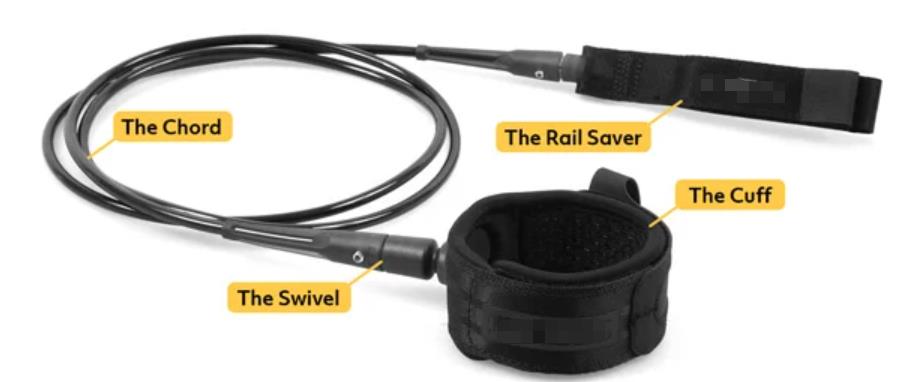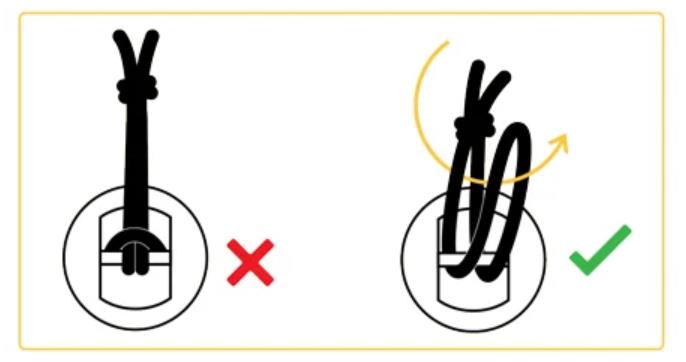Regardless of the cause for elevated excitement, it is inevitable that every so often as boards get tossed into the car, the mind forgets to complete the full circle ‘do I have everything I need?’ checklist and the leash is then left behind.
It is with these no leash circumstances that I realize just how much I appreciate the rather straightforward concept that is the 'surfboard leash', and the extent to which it allows me to maintain comfortability in big conditions while granting more surf and less swim time.
And because surfboard leashes have evolved to such an innovative extent since their initial conception, they are an equipment piece beyond worthy and essential to take the time to answer the questions of:
When were surfboard leashes invented?
What are the different parts of a surfboard leash?
What are the different kinds of surfboard leashes?
How do I size a surfboard leash?
A Brief History of the Surfboard Leash
Can you imagine being deemed a total kook if you chose to wear a leash? Because honestly, I can't wrap my head around surfing certain conditions without one.
But that was the just the way it was when Pat O'Neill (yep, son of Jack O’Neill, the same O'Neill legacy who brought us wetsuits and the surf brand O'Neill we now know and love) first commercialised the surfboard leash in the 1970's.
Although there are debates over who really invented it. According to the Encyclopedia of Surfing, the first recording of someone utilizing the idea of securing a surfboard to the body was when Tom Blake decided to tie a piece of cotton rope to his belt and his board in the 1930's. As you can expect it didn't gain traction and the idea got tossed aside.
This was followed up with a few other surfer inspired takes on creating a leash, everything maintained the same scheme of trial, error, and getting tossed out the window as none of the initial leashes caught on until Pat showed up to the Malibu invitational with a suction cup on the nose of his board and a rope tied to his wrist. Not only did he think that his invention would help with keeping the board close after a wipeout, he actually thought he could use the leverage from the tension of the rope to help intensify his cutbacks.
Hit with the nickname “kook-cord’ as surfers at the time believed leashes actually made surfing more dangerous, and there was indeed some truth to that. The first surfboard leashes were crafted from stretchy materials (think surgical cord or rubber) that often made the board ricochet back from elasticity and smack ya clean in the nose. In fact, Jack O'Neill has worn an eye patch ever since the day his son’s own creation backfired and his surfboard bounced back from the leash tension and took his eye clean out.
Just as well, surfers thought that the leash would make us weak and pitiful swimmers, and with stubborn pride they refused and neglected the idea of the leash.
But as time progressed, and as surfboard leash technology improved, about came the realization that a good leash actually makes surfing safer, and it allows us to push our limits in the most intimidation of situations by acting as our modern day lifeline in the ocean.
The Parts of a Surfboard Leash

The Cuff
The cuff is the velcro attachment that straps around your ankle to secure the leash to your body. Oftentimes featured with a key pocket so that you don't have to stash your key in the sand while surfing, but don't try stuffing your push to start fob down in there…
The Cord
The cord is basically the leash itself. The long, usually polyurethane piece that attaches the leash to the cuff and also to the rail saver so that you can then attach it to the board.
The Rail Saver & Leash rope
The rail saver is the piece that attaches the leash to the leash rope. Usually made of a thick and protective fabric secured with velcro, rail savers are designed to be the part of the leash that gets tugged on your surfboard tail when a wave is pulling it. By being thick and soft, This prevents the leash itself from slicing through the delicate tail of surfboards by placing the pressure on the thick surface area and soft fabric that is the rail saver.
The rail saver is strapped around the leash rope, which is the little (but super strong) rope that is knotted into your leash plug so that you have a viable place to strap your rail saver into, thus attaching the leash to the board.
PRO TIP: Avoid the leash rope being too long and touching your rails. This is what the rail saver is designed for. The rail saver will help you avoid damaging the tail of your board by pulling the leash rope into it.

The Swivel
The best way to describe a swivel is to compare it to a joint. The leash swivel is a small piece that attaches the cord to the cuff that is designed to give the leash and your ankle an entirely free range of motion. It prevents the leash from getting tangled from certain movements by allowing the cord to move freely from the cuff. If a leash doesn't have a swivel, you probably dont want that leash.
A single swivel will feature one of these joints where the cord meets the cuff, whereas some leashes feature a multiple swivel. Multiple swivels attach to the cord to the cuff and also the cuff to the rail saver, creating the highest extent possible in free ranging movement.
